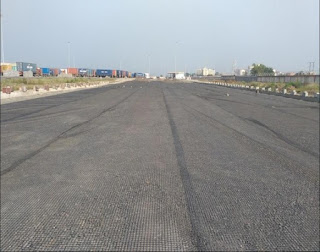In the dynamic world of geotechnical engineering, the stabilization of slopes represents a critical challenge, especially in regions prone to erosion, landslides, and other geotechnical failures. Basal reinforcement emerges as a cornerstone technology in this domain, offering innovative solutions that ensure safety, sustainability, and resilience in slope stabilization projects. This article delves into the significance of basal reinforcement, exploring its mechanisms, materials, benefits, and the pivotal role it plays in safeguarding and preserving the structural integrity of sloped terrains.
Understanding Basal Reinforcement
Basal reinforcement refers to the strategic incorporation of reinforcing materials at the base or within a soil mass to enhance its stability and load-bearing capacity. This technique is particularly valuable in slope stabilization, where the risk of sliding and erosion poses significant threats to infrastructure and natural landscapes. By integrating reinforcing layers, such as geotextiles, geogrids, or composite materials, engineers can significantly improve the mechanical properties of the soil, thus preventing displacement and failure.
Materials and Mechanisms
The choice of materials for basal reinforcement is pivotal, with options ranging from synthetic to natural fibers, each offering unique benefits in terms of strength, durability, and environmental compatibility. Geotextiles and geogrids are among the most commonly used materials, prized for their high tensile strength and ability to distribute loads evenly across the reinforced area. These materials work by interlocking with soil particles, creating a composite structure that enhances shear resistance and minimizes the risk of slope failure.
The mechanism of basal reinforcement involves the transfer of loads from the weaker soil to the stronger, reinforced layer, effectively increasing the overall stability of the slope. This process not only prevents soil displacement but also accommodates movements due to environmental changes, such as moisture variation and seismic activity, without compromising structural integrity.
Benefits of Basal Reinforcement in Slope Stabilization
The benefits of basal reinforcement extend beyond mere stabilization. This technique offers a sustainable approach to slope management, minimizing the need for extensive earthworks and the use of non-renewable resources. It is also cost-effective, reducing both initial construction costs and long-term maintenance expenses. Additionally, basal reinforcement can be applied in a variety of settings, from natural landscapes to urban environments, providing a versatile solution to slope stabilization challenges.
Moreover, basal reinforcement contributes to environmental conservation. By preventing erosion and landslides, it helps preserve natural habitats, water quality, and soil health. The use of eco-friendly materials further enhances the sustainability profile of this approach, making it an attractive option for environmentally conscious projects.
Case Studies and Applications
Real-world applications of basal reinforcement in slope stabilization offer compelling evidence of its effectiveness. One notable example is the stabilization of railway embankments, where basal reinforcement has been instrumental in preventing landslides that could disrupt rail services. Similarly, in highway construction, basal reinforced slopes ensure the safety of roadways traversing challenging terrains. In urban settings, this technique allows for the safe development of residential and commercial areas on sloped lands, maximizing land use without compromising safety.
Challenges and Future Directions
Despite its advantages, the implementation of basal reinforcement faces challenges, including the need for precise engineering assessments, material selection, and installation techniques. The future of basal reinforcement lies in advancing research and innovation, particularly in the development of new materials and design methodologies that further enhance its effectiveness and sustainability.
In conclusion, the role of basal reinforcement in slope stabilization is indispensable in modern geotechnical engineering. It offers a sophisticated, efficient, and environmentally friendly solution to managing slope stability challenges. As technology and materials science advance, basal reinforcement will undoubtedly continue to evolve, playing a crucial role in engineering safe, sustainable, and resilient landscapes in the face of changing environmental conditions.

Comments
Post a Comment